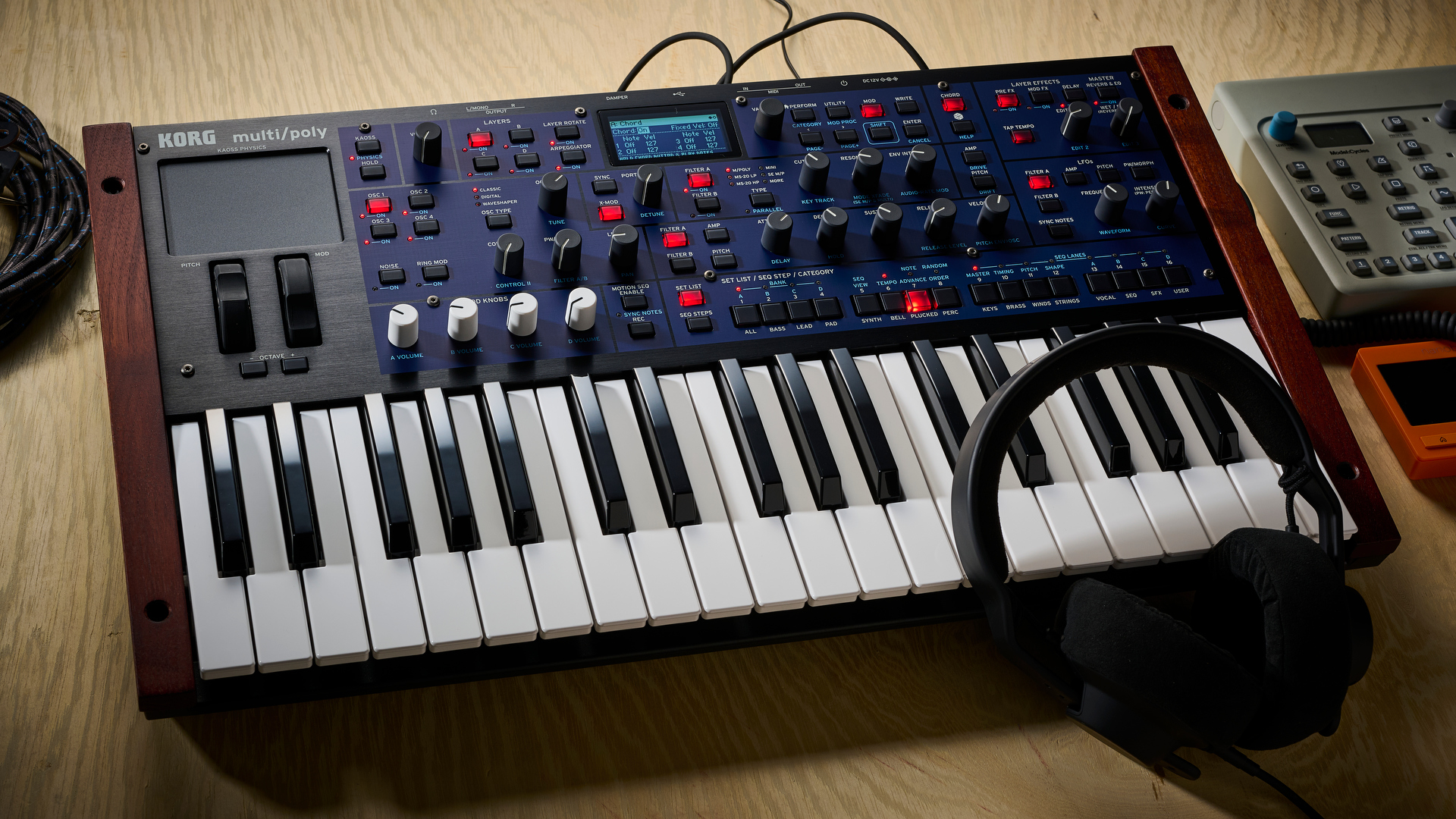
Korg Multi/Poly: What is it?
Korg’s Mono/Poly is back… sort of. With its latest instrument, Multi/Poly, Korg is reviving its much-loved 1980s analogue synth, in spirit if not exactly in design or sound. In much the same way that 2020’s Wavestate reworked the basic concept of the original Wavestation, and Opsix significantly built on the basic format of 1980s FM synths, Multi/Poly takes the ideas that made the Mono/Poly unique and runs with them.
The original Mono/Poly was first released in 1981 and, as its name implies, bridged the gap between mono- and polysynth designs. It did this via the inclusion of four VCOs that could be used in a paraphonic manner, whereby each oscillator could generate a different pitch, and one of the most characteristic aspects of the Mono/Poly’s design was the various ways these VCOs interacted. A chord memory mode allowed users to save and trigger four-note chords, while the synth’s sequencer could create riffs whereby each new note was triggered by a different oscillator, resulting in some unique patterns and timbres.
Multi/Poly takes loose inspiration from these design ideas. Korg describes it as an analogue modelling synthesizer, which is broadly accurate – there are modelled oscillators, filters and VCAs onboard – but somewhat undersells what the Multi/Poly can do. It’s also a characterisation that, arguably, risks overplaying the links between this synth and the original Mono/Poly. To be clear, while there are elements of Multi/Poly’s design that directly emulate parts of the Mono/Poly, this is neither a remake nor an emulation of that synth in the traditional sense.
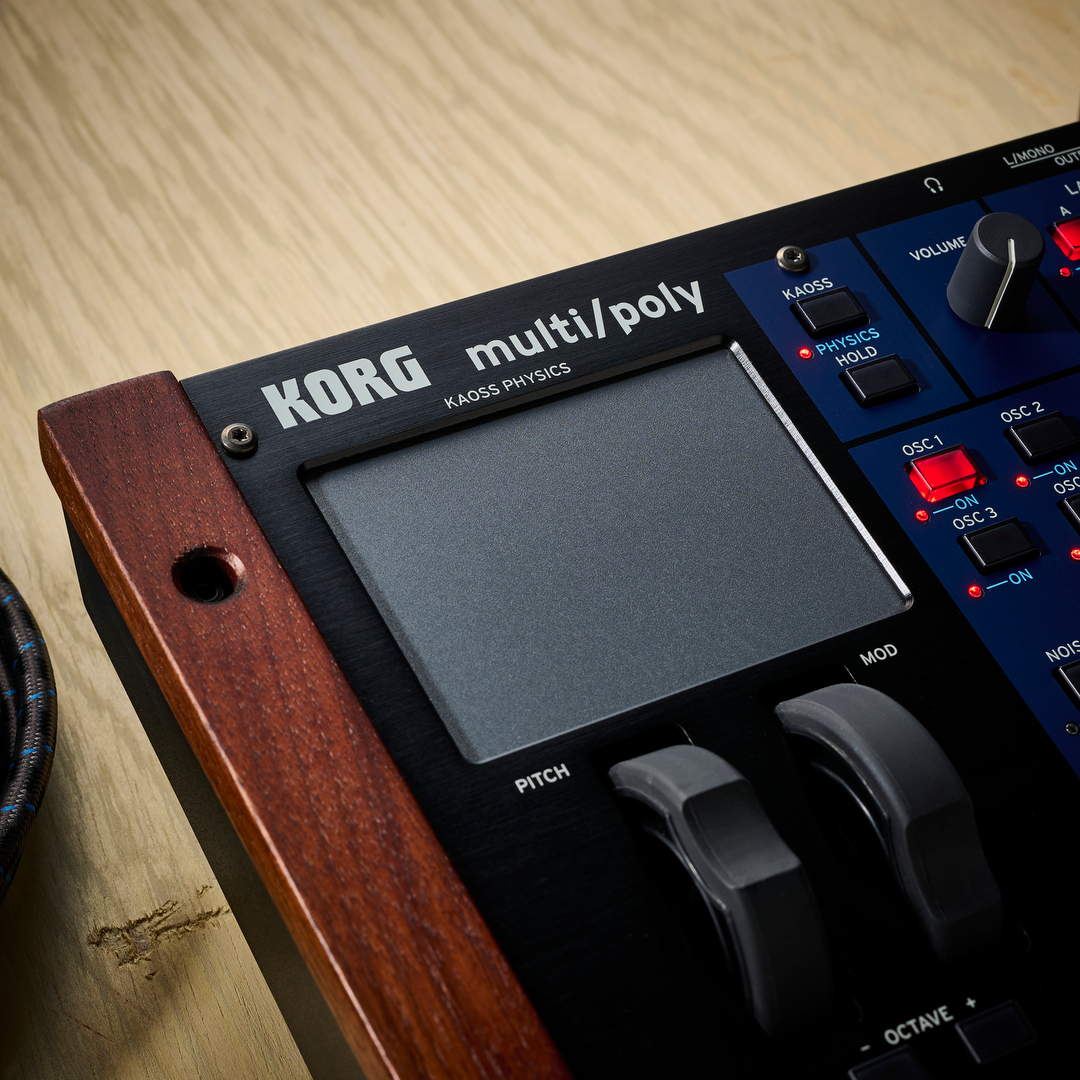
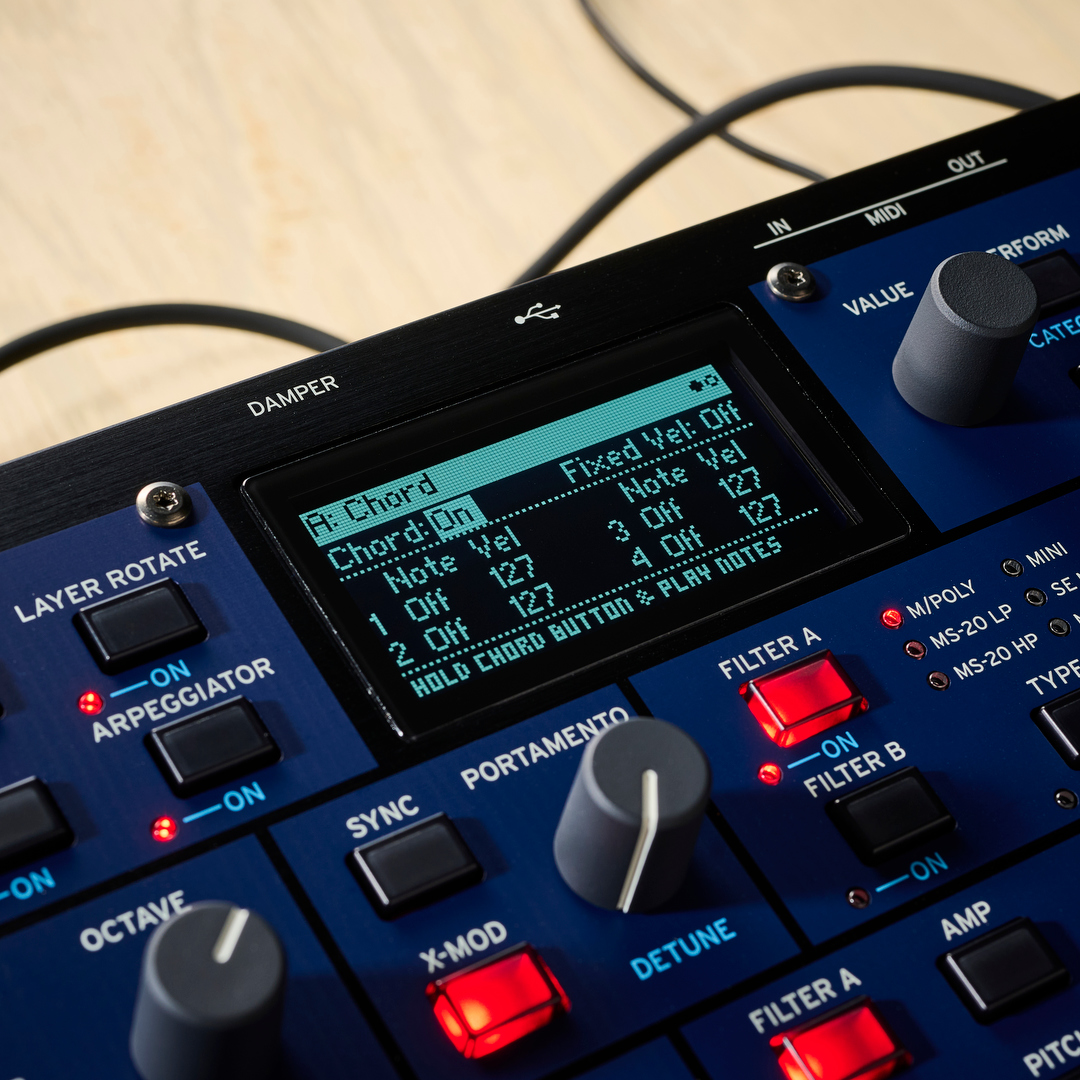
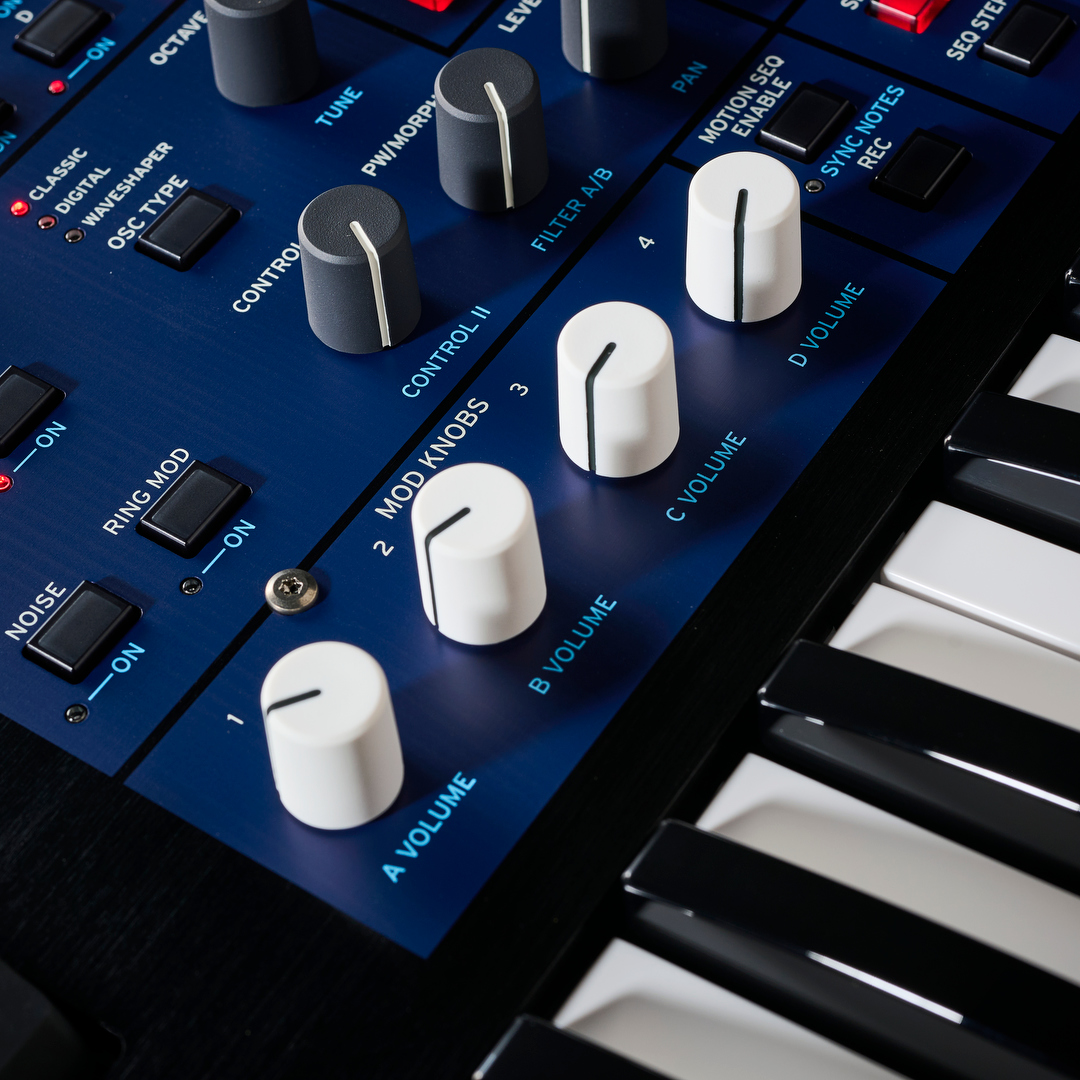
Korg Multi/Poly: Performance and verdict
Multi/Poly is a multi-timbral synth with a total polyphony of up-to 60 voices. Like the Mono/Poly, each of its layers can use up-to four oscillators, but here each voice is fully polyphonic, rather than using the oscillators to play individual notes paraphonically. What’s more, Multi/Poly has a total of four identical synth layers, each with four oscillators available, so the scope of the sounds it can create is exponentially larger.
Each oscillator can make use of one of three oscillator types. These are labelled Classic, which houses straightforward virtual analogue waves, Digital, which is a wavetable oscillator with 200 stock wavetables plus the ability to import more via a librarian app, and Waveshaper. Each oscillator can be shaped using front panel controls, which adjust different parameters depending on the oscillator mode.
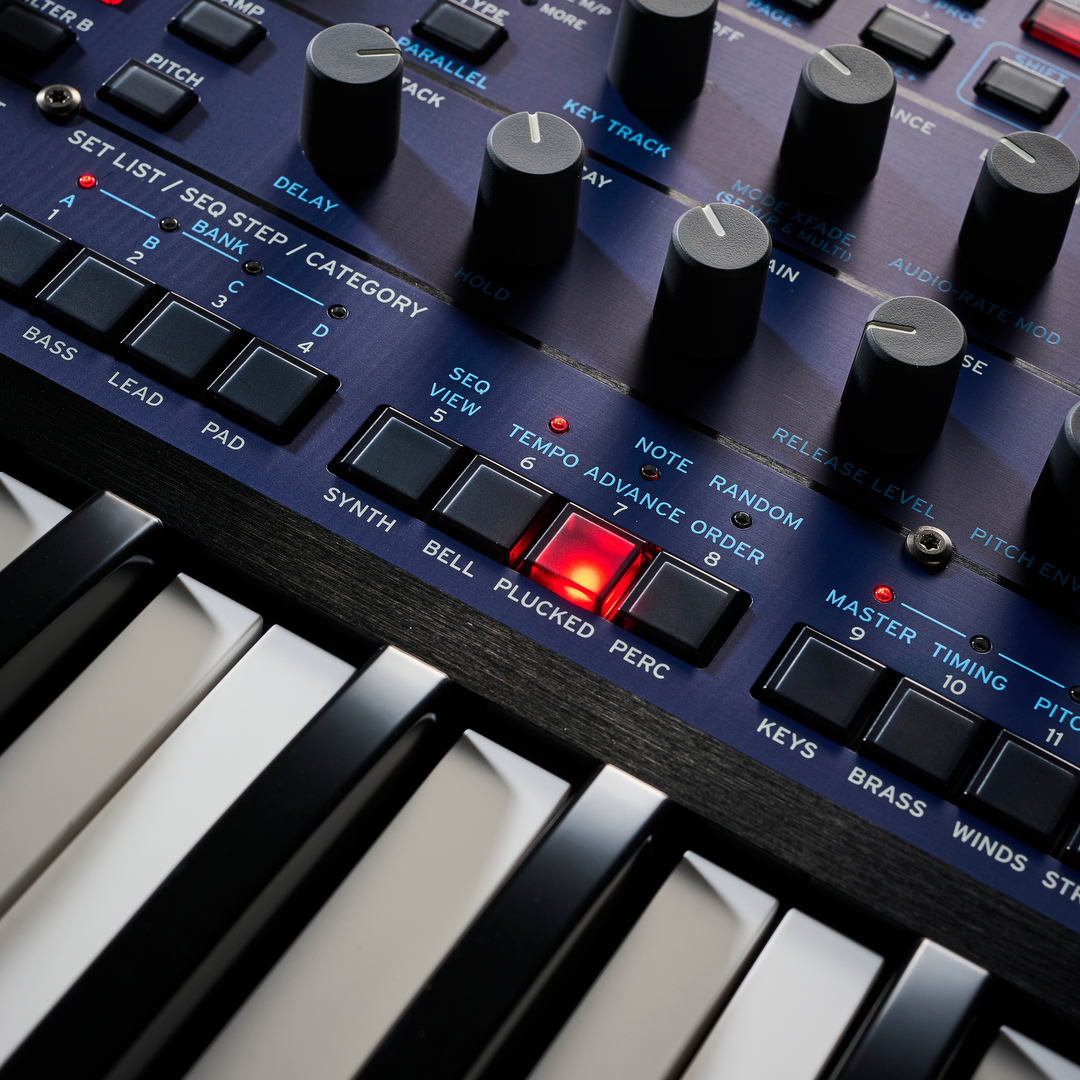
Multi/Poly's sequencer is based around the Motion Sequencing 2.0 system Korg first introduced with Wavestate. It uses a multi-track sequencer that can sequence not only pitches, but parameter automation, timing changes and even LFO-like shapers. It can also run poly-rhythmically, save and load presets for individual sequence tracks and use probabilities to introduce randomisation. In short, it's deep and very powerful. The downside to this, however, is that it lacks immediacy. While that's an understandable trade off, we were left wishing we could have a simple step sequencer that could be used to power the Layer Rotate mode for round-robin riff fun in the style of the original Mono/Poly. You can certainly achieve similar results with Multi/Poly's sequencer, but it takes some programming to get there. In our tests, we found ourselves turning to an external MIDI sequencer for the quick sequencing fun we craved.
For the analogue-style oscillators, the level of manipulation varies on the wave selected. Basic waves can usually only be changed by pitch and, where applicable, pulse-width. Some of the classic waves are structured to offer dual waveshapes though – eg saw/pulse, square/triangle – in which cases it's possible to morph between the two. There are also stacked saw wave options that have controls to adjust the level, detune and phase of the additional waves.
The wavetable mode is similar to that found in Korg’s dedicated wavetable synth Modwave. As on that synth, as well as setting and modulating the position of a wavetable, users can apply a wavetable modifier, which alters the way the sampled waves are played back, affecting the harmonics and tonality. In addition, a morphing function can stretch and compress the waveform in a variety of ways.
Waveshaper, meanwhile, is Korg’s take on the wavefolding techniques often associated with ‘West Coast’ modular synths. In basic terms, this takes a simple waveshape – here a sine or triangle – and distorts it via a modifier, which is a second more complex waveform. The oscillator controls in this case adjust the gain and offset of the modifier wave. There is an extensive list of increasingly complex modifiers to choose from, many of which are lifted from Korg’s ‘90s 01/W workstation, which featured a similar function.
Along with these three oscillator modes, Multi/Poly also features a noise generator, ring modulation, oscillator sync and cross-modulation between the oscillators.
This broad range of sound generation techniques – many of which are overtly digital in their nature – is one reason we’d say it’s a bit of a misnomer to call Multi/Poly an analogue modelling synth. That’s not to say, however, that analogue modelling isn’t present under the hood. Korg tells us that each voice uses a virtual voice card designed to produce subtle analogue-style variations in character, and modelled behaviour for the amp, envelopes, LFOs, portamento and oscillator tuning, all designed to mimic the behaviour of analogue circuitry. These effects can be adjusted and made more or less overt using the synth’s Drift sub menu.
The analogue influence is more obvious in the filter section. Each of Multi/Poly’s layers can make use of two filters, which can be arranged in series or parallel. As with other recent digital synths in Korg’s lineup, each slot offers a variety of filter modes, several of which are modelled on the designs of vintage analogue synths.
Unsurprisingly, the Mono/Poly’s lovely 4-pole LPF is top of the list, but it’s also joined by filters based on the MS-20, models of classic Moog, Sequential and Oberheim filters, and a few more vanilla filter types. Korg’s distinctive Multi-Filter is included too, which can crossfade between two different filter modes. Similar modelling is present in the amp section, again mimicking the same lineup of vintage synths.
As with its sibling instruments Modwave, Wavestate and Opsix, Multi/Poly performs well on the modulation front. It has four 6-stage envelope generators and five LFOs for each layer, all working per-voice. These feed into a highly capable mod matrix that includes modulation processors, whereby each modulation routing can be altered by a secondary input.
There is a lot more to the design of Multi/Poly, but much of it – including the design of the hardware itself – is inherited from other instruments in Korg’s lineup. This includes features such as a capable effect section, with per-layer and master slots, multi-lane Motion Sequencing (see boxout), and patch randomisation.
If anything, the Kaoss Physics pad is more effective here; for a sort-of modern form of vector synthesis
There are a couple of returning features worthy of special mention. One is the row of front panel Mod Knobs, which are effectively just macro controls, but they prove to be invaluable here, given the depth of the synth engine and its multi-layered nature. When designing patches from scratch, setting up appropriate control configurations for these is the key to getting the most out of the synth’s interface. The Mod Knobs can also be used to adjust the volume of Multi/Poly’s individual layers.
Another notable feature, inherited from the Modwave, is the Kaoss Physics pad. This is a touch-sensitive X/Y control surface that not only lets users blend between four assignable parameter settings, but can also trigger modulation controlled by the movement of an animated ball bouncing around a virtual space. As on the Modwave, it’s a touch gimmicky, but a lot of fun. If anything, the Kaoss Physics pad is more effective here; making use of the four layers and creative modulation assignments means the pad can be used for a sort-of modern form of vector synthesis, which is a lot of fun.
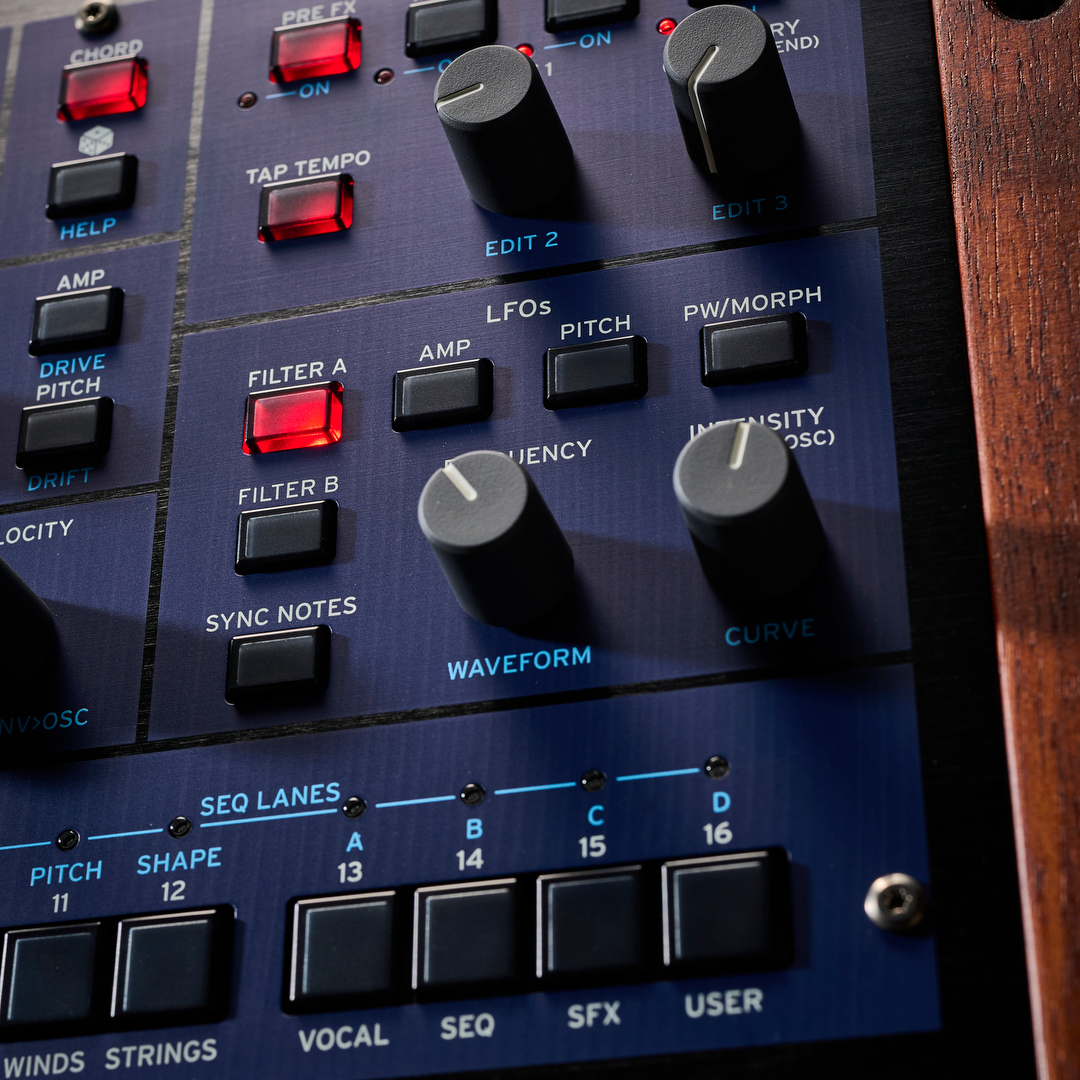
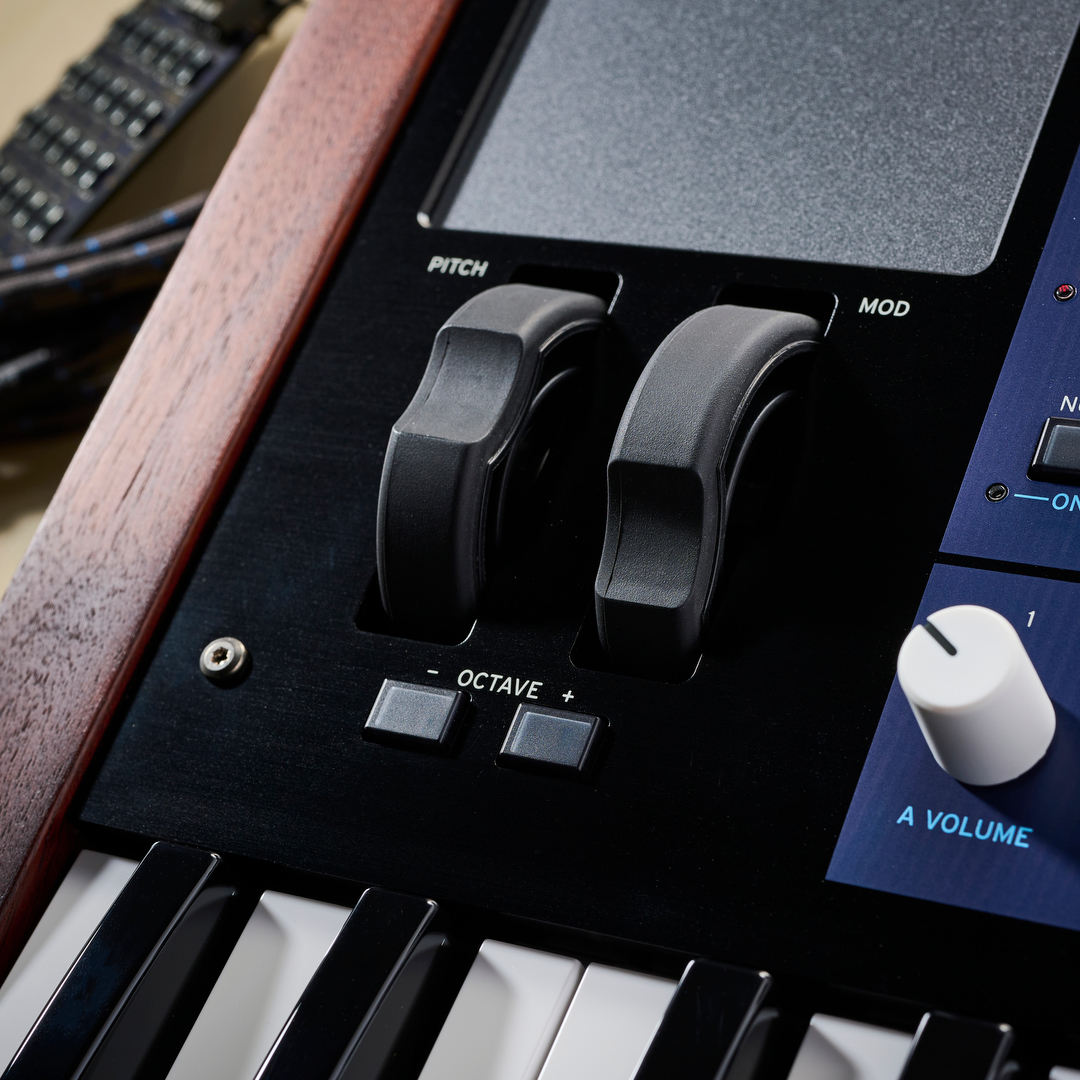
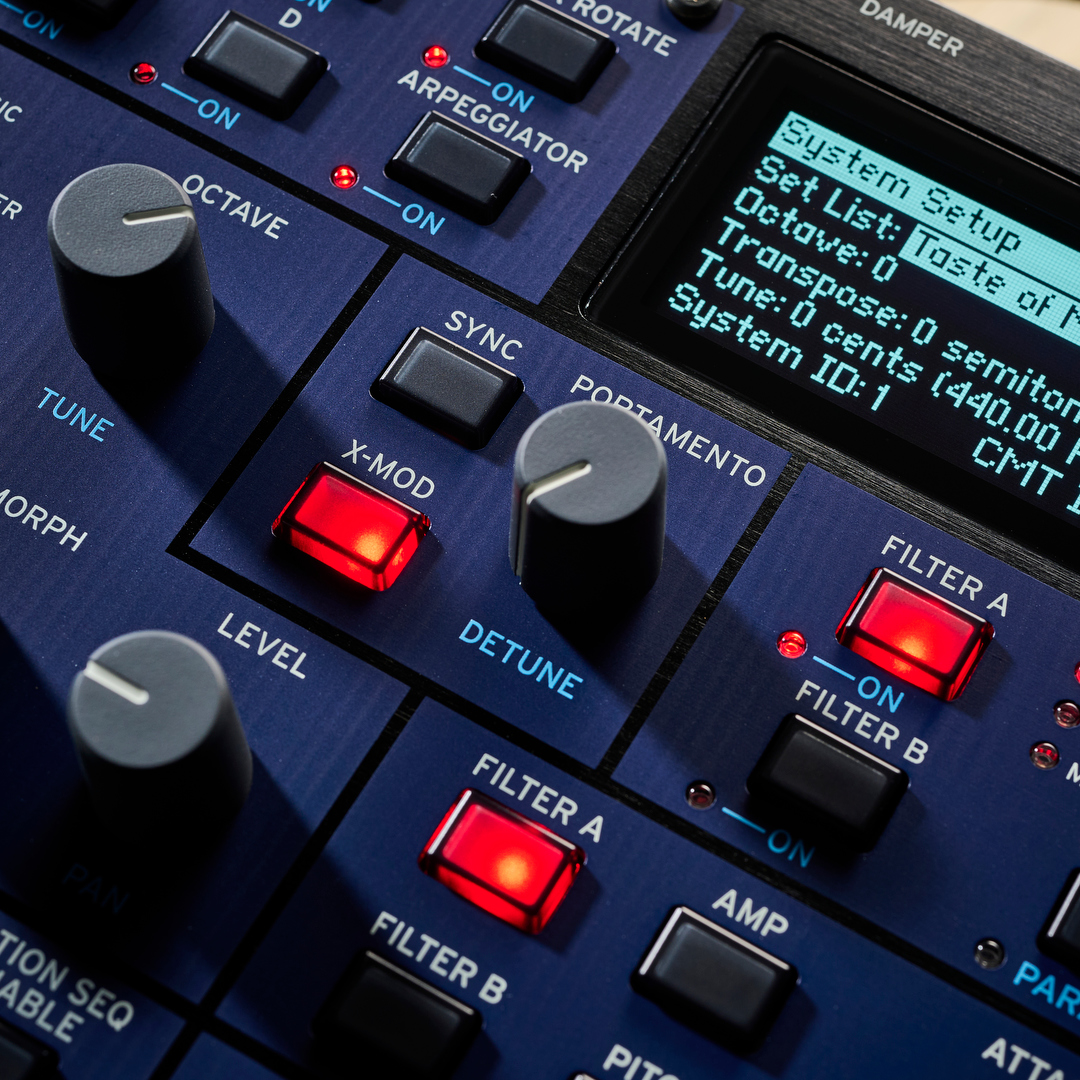
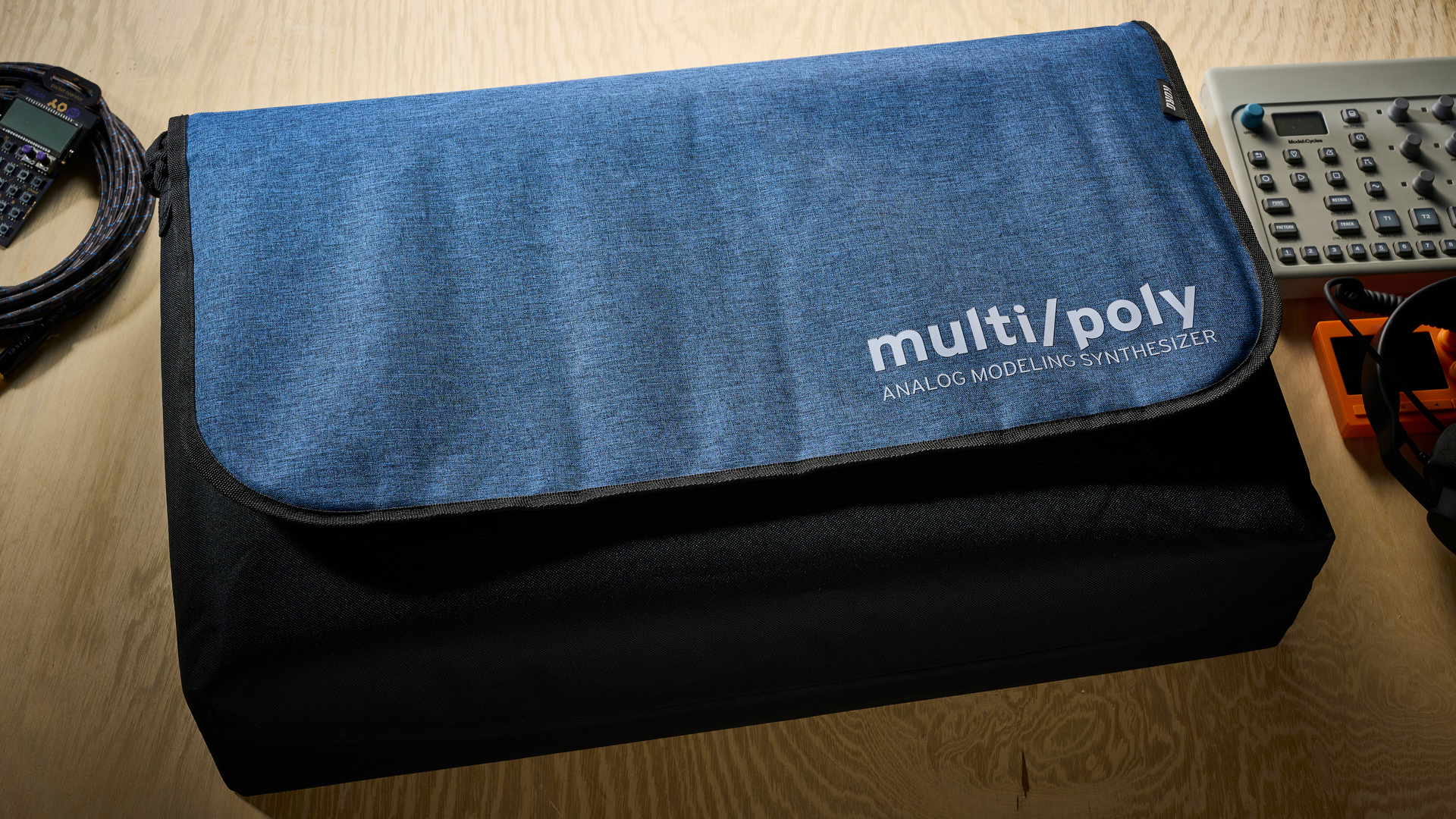
On rotation
Possibly the most distinctive feature of Multi/Poly is its Layer Rotate function. This is influenced by the original Mono/Poly’s ability to rotate oscillators in a round-robin manner as it cycled through a sequence. Here, however, rather than using separate oscillators for each new note, each note is played by the next layer in order. Within the menu, it’s possible to control the direction of the cycle, along with how many layers are used per-note.
It’s a simple idea, but huge amounts of fun and incredibly effective, particularly when combined with the arpeggiator. By, for example, setting up a selection of different analogue and digital-style sound across different layers, or applying different effects or levels of detuning, it’s possible to create some really interesting, characterful combinations. Throw some sound-shaping modulation into the mix using the macro knobs and Kaoss pad, and things can get really interesting and expressive.
Verdict
Aside from the slightly misjudged KingKorg Neo, we’ve been vocal fans of Korg’s recent digital synths, and Multi-Poly is no exception. There is a lot of depth and flexibility here, and as a result it can create a really broad range of high-quality synth sounds.
That said, there are a few points worth addressing. For one thing, those hoping for anything that resembles a reissue of the original Mono/Poly are going to be disappointed. It’s not that you can’t create vintage analogue sounds with Multi/Poly’s engine – it certainly holds its own when it comes to virtual analogue patches – but its capabilities are so much broader than that, and as a result it neither feels nor sounds inherently like the instrument that’s inspired its look and name.
There’s also an argument to be made that, as much as Multi/Poly is broad and versatile, aside from the Layer Rotate function, there’s not a lot here that we’ve not seen on previous Korg synths.
While the sound engine is impressive here, the hardware itself is essentially a reskin of that used for the Modwave/Opsix/Wavestate with slight UI variations. While there are elements of these designs we like, such as the Mod Knob macros and general portability, there are elements of the design we’re less keen on.
The compact layout means a lot of menu diving when setting up sounds, and – despite some attractive wood panelling here – the general feel is lightweight and plasticky, which has become more noticeable as the launch prices of Korg synths have creeped up in recent years (the original Wavestate launched for £699 in 2020).
All that being said, Multi/Poly is a complex and capable synthesizer that can create a vast breadth of interesting sounds. It might not be the reborn Mono/Poly we’ve been dreaming of, but there’s enough depth here to keep even the most demanding synthesist satisfied.
MusicRadar verdict: Those hoping for a Mono/Poly reissue might come away disappointed, but Multi/Poly is a deep, complex and capable synth that’s a lot of fun to get lost in.
Korg Multi/Poly: Hands-on demos
Korg Multi/Poly: Specifications
- KEY FEATURES: 60-voice polysynth making use of a mixture of analogue modelling, wavetable and waveshaping synthesis.
- KEYBED: 37 key semi-weighted action (velocity and release-velocity sensitive).
- I/O: Headphone (6.3 mm stereo phone jack), Output: L/mono and R (impedance-balanced 6.3 mm TRS phone jacks), damper (6.3 mm phone jack, half-damper not supported), MIDI in and out connectors, USB B port.
- DIMENSIONS: 566 mm x 319 mm x 93 mm.
- WEIGHT: 3.5kg.
- CONTACT: Korg







